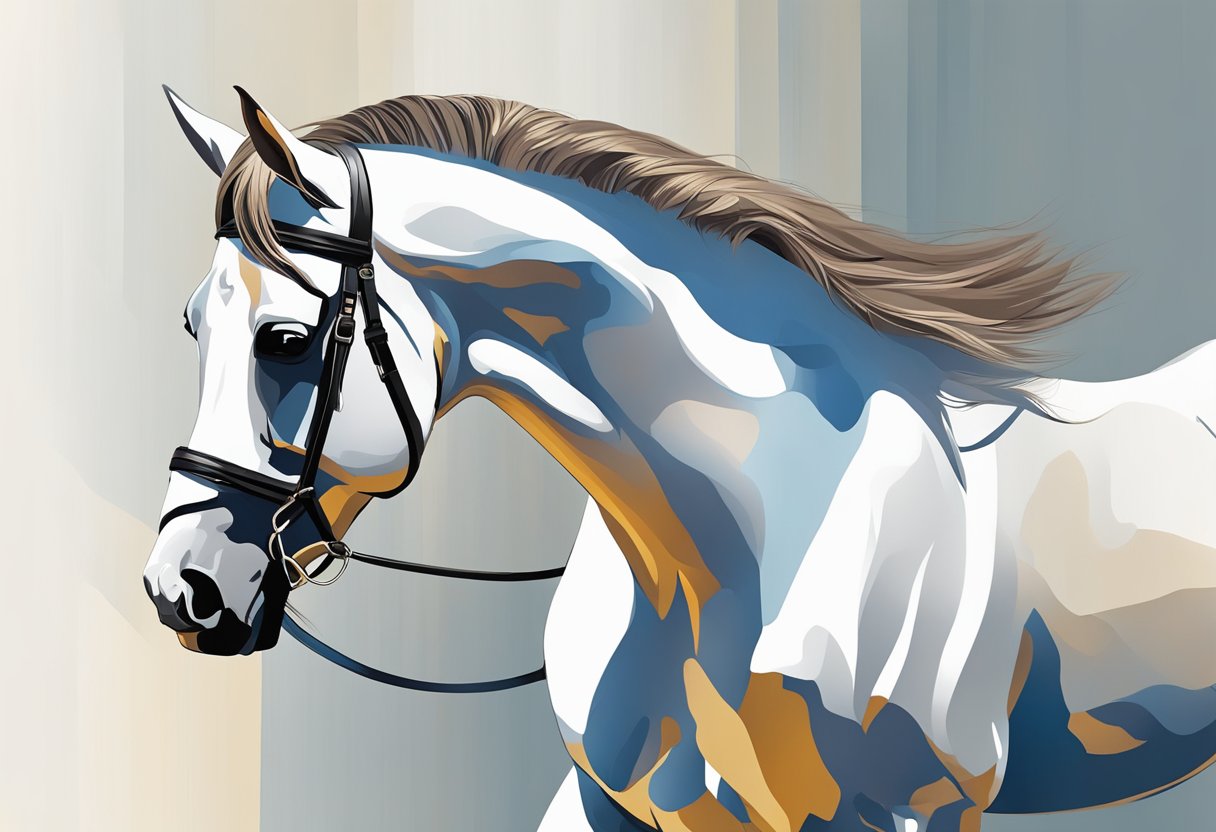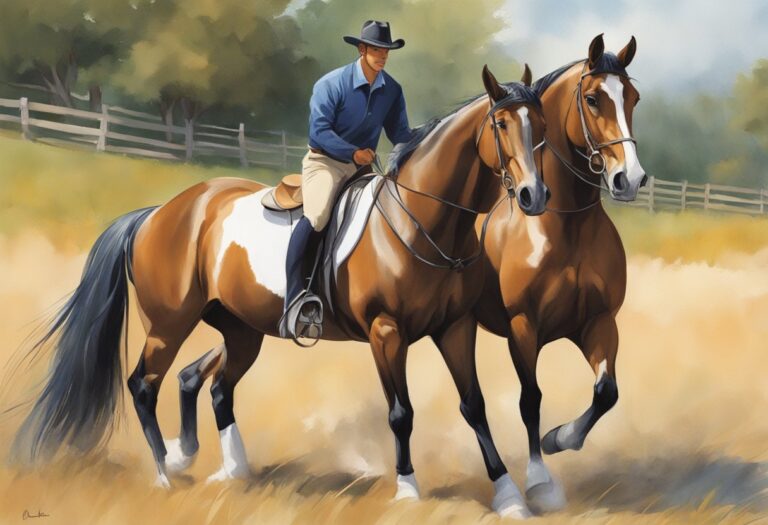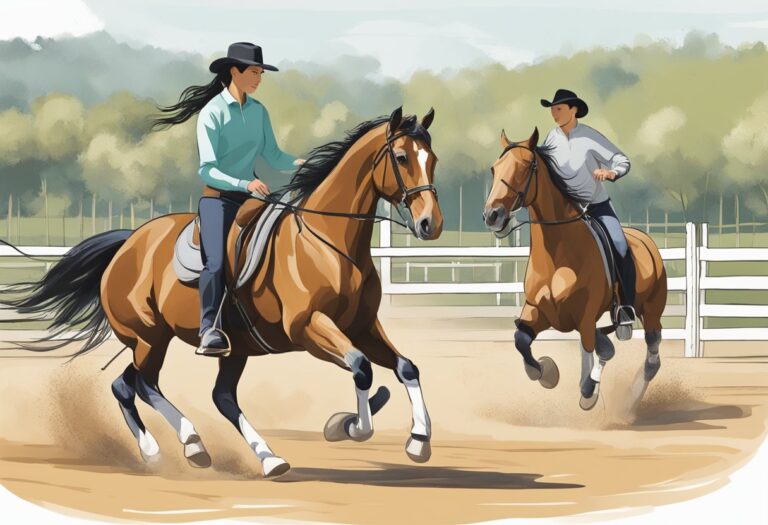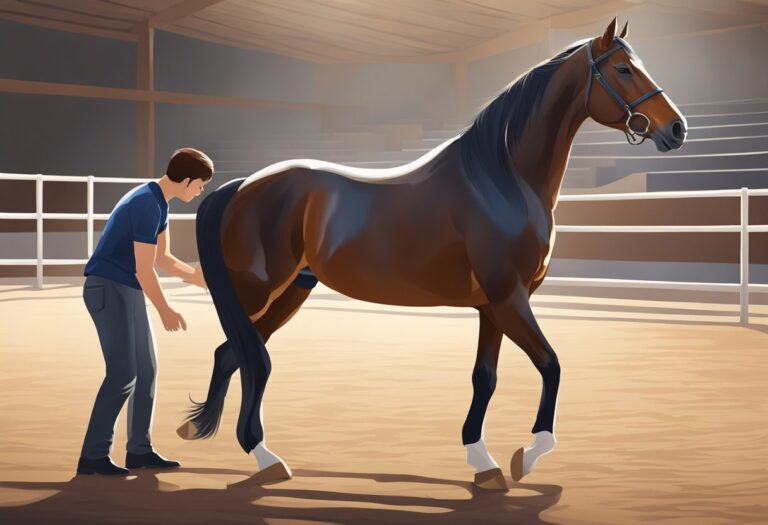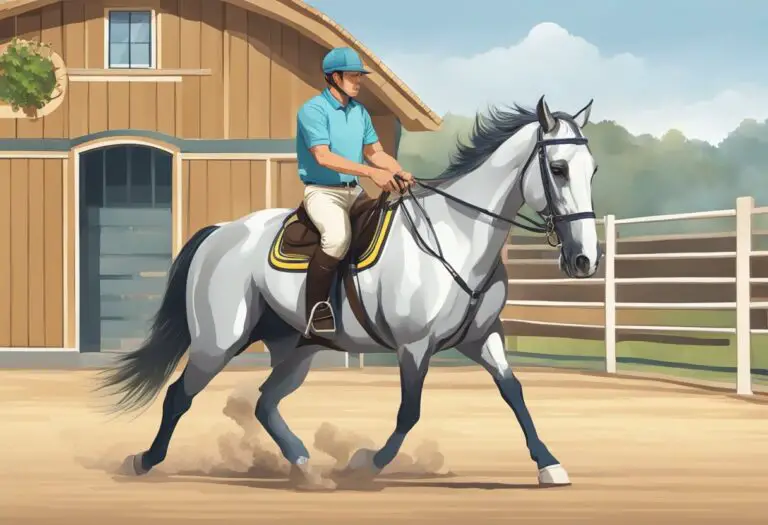How to Desensitize a Horse to New Experiences? A Guide for Equestrians
Desensitization is an important part of horse training. It involves exposing horses to new experiences and stimuli in a controlled and gradual manner, helping them become more confident and less reactive. Desensitization can be particularly useful for horses that are easily spooked or anxious, as it helps them learn to remain calm and focused in a variety of situations.
There are many different techniques and approaches to desensitization, and what works best will depend on the individual horse and their temperament. Some trainers prefer to use systematic desensitization, which involves gradually introducing the horse to new stimuli over a period of time. Others may use flooding, which involves exposing the horse to the stimulus all at once in order to quickly desensitize them. Regardless of the approach, desensitization is an important tool for any horse owner or trainer looking to help their horse become more confident and well-rounded.
Understanding Equine Sensory Processing

Identifying Sensory Thresholds
When desensitizing a horse to new experiences, it is important to understand their sensory thresholds. Every horse has a different level of sensitivity to different stimuli, such as touch, sound, and movement. Identifying these thresholds can help you tailor your desensitization training to your horse’s specific needs.
One way to identify your horse’s sensory thresholds is to observe their behavior in different situations. For example, if your horse is easily spooked by loud noises, they may have a low auditory threshold. If they are skittish when touched in certain areas, they may have a low tactile threshold.
Another way to identify sensory thresholds is through testing. This can involve exposing your horse to different stimuli and observing their reactions. For example, you could use a plastic bag to test their reaction to a rustling sound, or a soft brush to test their tactile sensitivity.
Recognizing Stress Signals
It is important to recognize when your horse is experiencing stress during desensitization training. Stress signals can include sweating, increased heart rate, tense muscles, and a raised head or tail. If you notice any of these signs, it may be a sign that your horse is feeling overwhelmed or anxious.
To prevent stress during desensitization training, it is important to start slowly and gradually increase the intensity of the stimuli. You should also give your horse plenty of breaks and positive reinforcement when they respond well to the training.
Overall, understanding your horse’s sensory thresholds and recognizing stress signals can help you effectively desensitize them to new experiences. By tailoring your training to their specific needs and providing a positive and supportive environment, you can help your horse become more confident and comfortable in a variety of situations.
Establishing a Trust-Based Relationship

Establishing a trust-based relationship with a horse is crucial for desensitizing them to new experiences. Horses are prey animals and are naturally wary of new things, so it is important to build their trust in their handler before introducing them to new situations.
Building Confidence Through Positive Reinforcement
One effective way to build a trusting relationship with a horse is through positive reinforcement. This involves rewarding the horse for good behavior, rather than punishing them for bad behavior. Positive reinforcement can be in the form of treats, praise, or scratches in their favorite spot.
For example, if the horse is nervous around a new object, the handler can start by rewarding the horse for approaching the object, then for sniffing it, and eventually for touching it with their nose. This gradual approach helps the horse build confidence and trust in their handler, as well as in the new object.
Developing Consistent Routines
Consistency is also key in building a trusting relationship with a horse. Horses thrive on routine and predictability, so it is important to establish a consistent routine for the horse’s care and training.
For example, feeding the horse at the same time every day, grooming them in the same order, and using the same cues for certain behaviors can help the horse feel secure and comfortable. This consistency also helps the horse understand what is expected of them, which can reduce their anxiety in new situations.
By establishing a trust-based relationship with a horse through positive reinforcement and consistent routines, handlers can create a foundation for desensitizing the horse to new experiences.
Gradual Exposure Techniques

Systematic Desensitization
Systematic desensitization is a technique used to help horses become more comfortable with new experiences. This technique involves gradually exposing the horse to the new experience in a controlled and safe environment. The idea is to start with a low level of exposure and gradually increase it over time until the horse is comfortable with the experience.
To use systematic desensitization, the horse should be exposed to the new experience in small increments. For example, if the horse is afraid of water, the handler could start by allowing the horse to see a small amount of water from a distance. Once the horse is comfortable with this level of exposure, the handler could move the horse closer to the water or allow the horse to touch the water with its nose.
It is important to move slowly and not rush the process. If the horse becomes fearful or anxious, the handler should back off and reduce the level of exposure. Over time, the horse will become more comfortable with the new experience and the level of exposure can be increased.
Counter-Conditioning
Counter-conditioning is another technique that can help desensitize horses to new experiences. This technique involves pairing the new experience with something positive, such as a treat or praise. The idea is to create a positive association with the new experience, which can help the horse become more comfortable with it.
To use counter-conditioning, the handler should start by exposing the horse to the new experience in a controlled environment. As soon as the horse shows signs of relaxation or acceptance, the handler should reward the horse with a treat or praise. Over time, the horse will begin to associate the new experience with something positive and will become more comfortable with it.
It is important to be consistent with the rewards and to only reward the horse when it is showing signs of relaxation or acceptance. If the horse becomes fearful or anxious, the handler should back off and reduce the level of exposure.
By using systematic desensitization and counter-conditioning techniques, handlers can help horses become more comfortable with new experiences. These techniques require patience and consistency, but can be very effective in helping horses overcome their fears and anxieties.
Creating a Desensitization Plan

Desensitizing a horse to new experiences can be a challenging task, but developing a solid plan can make the process much easier. Here are some steps to follow when creating a desensitization plan for your horse.
Assessing the Horse’s Individual Needs
Before beginning any desensitization training, it’s important to assess your horse’s individual needs. Every horse is different and will have unique sensitivities and reactions to new experiences. Start by observing your horse’s behavior in various situations and identifying any specific triggers or stressors.
Once you have a good understanding of your horse’s individual needs, you can begin to tailor your desensitization plan accordingly. For example, if your horse is particularly sensitive to loud noises, you may want to focus on gradually introducing them to louder sounds in a controlled environment.
Setting Achievable Goals
When creating a desensitization plan, it’s important to set achievable goals. Start with small, manageable tasks and gradually work your way up to more challenging experiences. This will help build your horse’s confidence and prevent overwhelming them with too much too soon.
Make a list of specific goals you want to achieve with your horse and break them down into manageable steps. For example, if your goal is to desensitize your horse to traffic, you might start by exposing them to a quiet road with little traffic and gradually increase the level of traffic over time.
By following these steps and creating a tailored desensitization plan for your horse, you can help them become more confident and comfortable in new situations. Remember to always work at your horse’s pace and never push them beyond their limits.
Implementing Desensitization Exercises

Utilizing Sensory Stimuli
One effective way to desensitize a horse to new experiences is to utilize sensory stimuli. This can include introducing the horse to various sounds, smells, and textures. For example, playing music or using clippers around the horse can help them become accustomed to new sounds. Introducing different scents, such as essential oils or perfumes, can also help the horse become more comfortable with new smells. Additionally, using different textures, such as different types of brushes or blankets, can help the horse become more comfortable with different sensations.
Incorporating Novel Objects
Another way to desensitize a horse to new experiences is to incorporate novel objects into their environment. This can include introducing the horse to new objects such as umbrellas, tarps, or traffic cones. It is important to start with objects that are less intimidating and gradually work up to more challenging objects. By introducing the horse to new objects in a controlled environment, they can become more comfortable and confident when encountering new objects in the future.
Introducing New Environments
Introducing the horse to new environments can also be an effective way to desensitize them to new experiences. This can include taking the horse on trail rides or to new arenas. It is important to start with less challenging environments and gradually work up to more challenging ones. By exposing the horse to new environments, they can become more confident and comfortable in different settings.
Overall, implementing desensitization exercises can be a helpful tool in helping horses become more comfortable with new experiences. By utilizing sensory stimuli, incorporating novel objects, and introducing new environments, horses can become more confident and less reactive to new situations.
Monitoring Progress and Adjusting Strategies

Evaluating Behavioral Responses
As the horse is gradually exposed to new experiences, it is important to monitor its behavioral responses closely. This can be done by observing the horse’s body language, such as its ears, tail, and overall demeanor. If the horse appears tense or frightened, it may be necessary to slow down the desensitization process or adjust the approach.
It is also helpful to keep a record of the horse’s progress, noting any improvements or setbacks. This can be done through written notes or a chart that tracks the horse’s reactions to different stimuli over time. By keeping track of the horse’s responses, it will be easier to identify patterns and adjust the desensitization strategy accordingly.
Fine-Tuning the Approach
As the horse becomes more comfortable with new experiences, it may be necessary to fine-tune the desensitization approach. This could involve increasing the intensity or duration of the stimulus, or introducing new stimuli that are slightly more challenging. It is important to make these adjustments gradually and carefully, to avoid overwhelming the horse.
It may also be helpful to vary the desensitization exercises, to keep the horse engaged and prevent boredom. This could involve introducing new objects or scenarios, or changing the location or timing of the desensitization sessions. By keeping the horse mentally stimulated and challenged, it will be more likely to continue making progress.
Overall, monitoring the horse’s behavioral responses and fine-tuning the desensitization approach as needed will help ensure a successful outcome. With patience, consistency, and a thoughtful approach, horses can learn to accept new experiences and become more confident and adaptable.
Safety Considerations for Desensitization Training

Ensuring Handler Safety
When desensitizing a horse to new experiences, it is important to prioritize the safety of the handler. The handler should always wear appropriate safety gear, including a riding helmet, sturdy boots, and gloves. In addition, the horse should be securely tied or held by a competent assistant during the training session.
It is also important to establish clear communication between the handler and the horse. The handler should use consistent cues and signals to communicate with the horse, and should never use force or aggression. If the horse becomes agitated or frightened, the handler should remain calm and patient, and should never attempt to restrain or punish the horse.
Recognizing Limits and Avoiding Overwhelm
Desensitization training should be conducted gradually and systematically, with the horse being exposed to new stimuli in small, manageable increments. The handler should carefully observe the horse’s behavior and body language, and should stop the training session if the horse becomes too stressed or overwhelmed.
It is important to recognize the horse’s limits and to avoid pushing the horse too far too quickly. If the horse is showing signs of distress, such as sweating, shaking, or vocalizing, the handler should immediately stop the training session and allow the horse to calm down.
By following these safety considerations, handlers can ensure a safe and effective desensitization training experience for both themselves and their horses.
Advanced Desensitization Scenarios

Preparing for Competitive Events
In order to prepare a horse for a competitive event, it is important to expose them to a variety of stimuli that they may encounter during the event. This can include loud noises, crowds, and other horses. One way to do this is to simulate the event environment as closely as possible. For example, if the event takes place in an arena, the horse should be worked in an arena with a similar footing, size, and layout.
Another important aspect of preparing for a competitive event is to gradually increase the intensity of the stimuli. For example, if the horse is afraid of loud noises, start by exposing them to quieter noises and gradually increase the volume over time. It is important to never force the horse to confront a stimulus that they are not ready for, as this can cause them to become more fearful.
Handling Unexpected Situations
Even with the best preparation, horses may encounter unexpected situations that they have not been desensitized to. In these situations, it is important to remain calm and confident, as horses can sense when their handler is nervous or afraid.
One technique that can be helpful in these situations is to use a “desensitization buddy.” This can be another horse or a calm, experienced handler who can help the horse feel more secure and confident. The buddy should be introduced to the horse prior to the unexpected situation, so that they are familiar with each other.
It is also important to have a plan in place for how to handle unexpected situations. This can include having a safe area where the horse can be led to calm down, or having a backup handler who can take over if the primary handler becomes overwhelmed.
By following these advanced desensitization techniques, handlers can help their horses feel more confident and prepared in a variety of situations.

